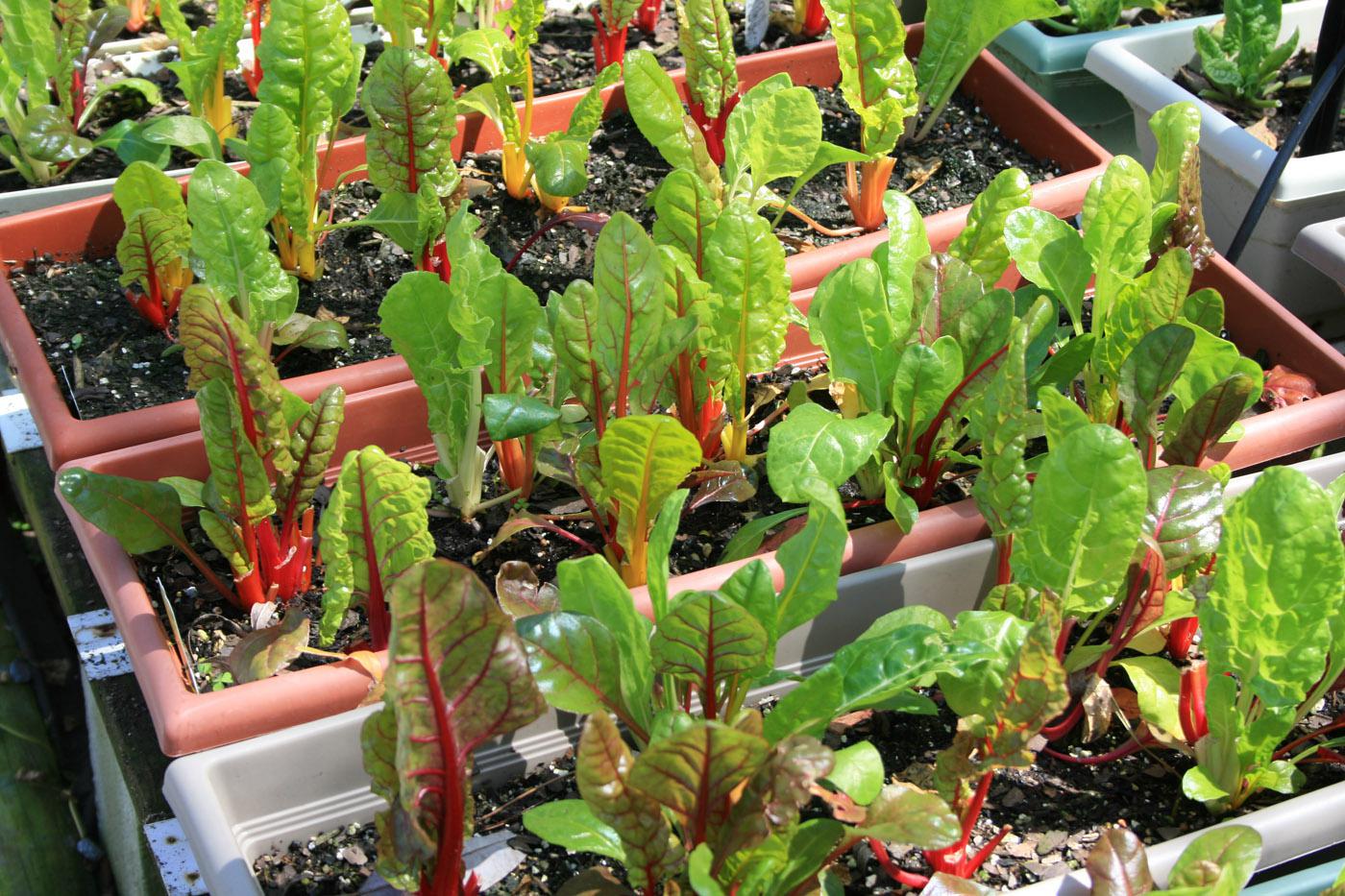Information Possibly Outdated
The information presented on this page was originally released on January 30, 2012. It may not be outdated, but please search our site for more current information. If you plan to quote or reference this information in a publication, please check with the Extension specialist or author before proceeding.
Tasty Swiss chard brightens winter garden
Gardeners seeking color for the winter landscape should look beyond traditional pansies and violas and embrace the wide range of ornamental vegetables that can be grown in Mississippi. I’ve written about the colorful varieties of ornamental kale and cabbage, but a plant that doesn’t get much press is Swiss chard. Swiss chard is a winter annual available in a variety of bright and eye-catching colors, and it will certainly attract attention if you grow it.
Though many gardeners have not heard of it, Swiss chard was one of the first vegetables to be marketed for its ornamental qualities. The variety Bright Lights, with its stems and veins of gold, orange, yellow and red, is an outstanding choice for a border planting or combination container. One of my favorite winter varieties is Ruby Red. The leaf stems and veins are a brilliant red, and the dark green leaves have a crinkly texture.
In addition to looking good in the garden and landscape, Swiss chard is a tasty plant. Closely related to the garden beet, the leafy foliage has a mild flavor and is loaded with important nutrients. Remember we eat first with our eyes, and Swiss chard’s bright colors only enhance the dining experience. When cooking with leaves that are twelve inches or larger, be sure to coarsely chop them. Then you can add them to a stir-fry or casserole.
I grow colorful Bright Lights Swiss chard in window boxes in our home garden. I harvest the smaller leaves at the baby leaf stage and add them directly to fresh salads. A word of caution when harvesting your Swiss chard leaves: do not harvest at the ground level. The plant produces new leaves from the center, so carefully cut and harvest leaves from the outside to ensure edible enjoyment.
This plant has an upright growth habit and will eventually arch. Swiss chard can grow more than two feet tall and two feet wide. Broad, stout stems support the leaves. Leaves can be more than a foot long and almost as wide.
Typically, Swiss chard will grow over a long period of time. We are fortunate in Mississippi to be able to grow this beautiful and delicious plant almost year round. Unlike spinach or lettuces that die when the temperatures increase, Swiss chard is more tolerant of the heat.
When growing Swiss chard in the garden and landscape, be sure the soil is a bit alkaline. This is a time when soil testing really comes in handy. Feed with a good garden blend of 16-4-8 fertilizer at planting.
Look for Swiss chard transplants at your local garden center as the spring season gets going.








